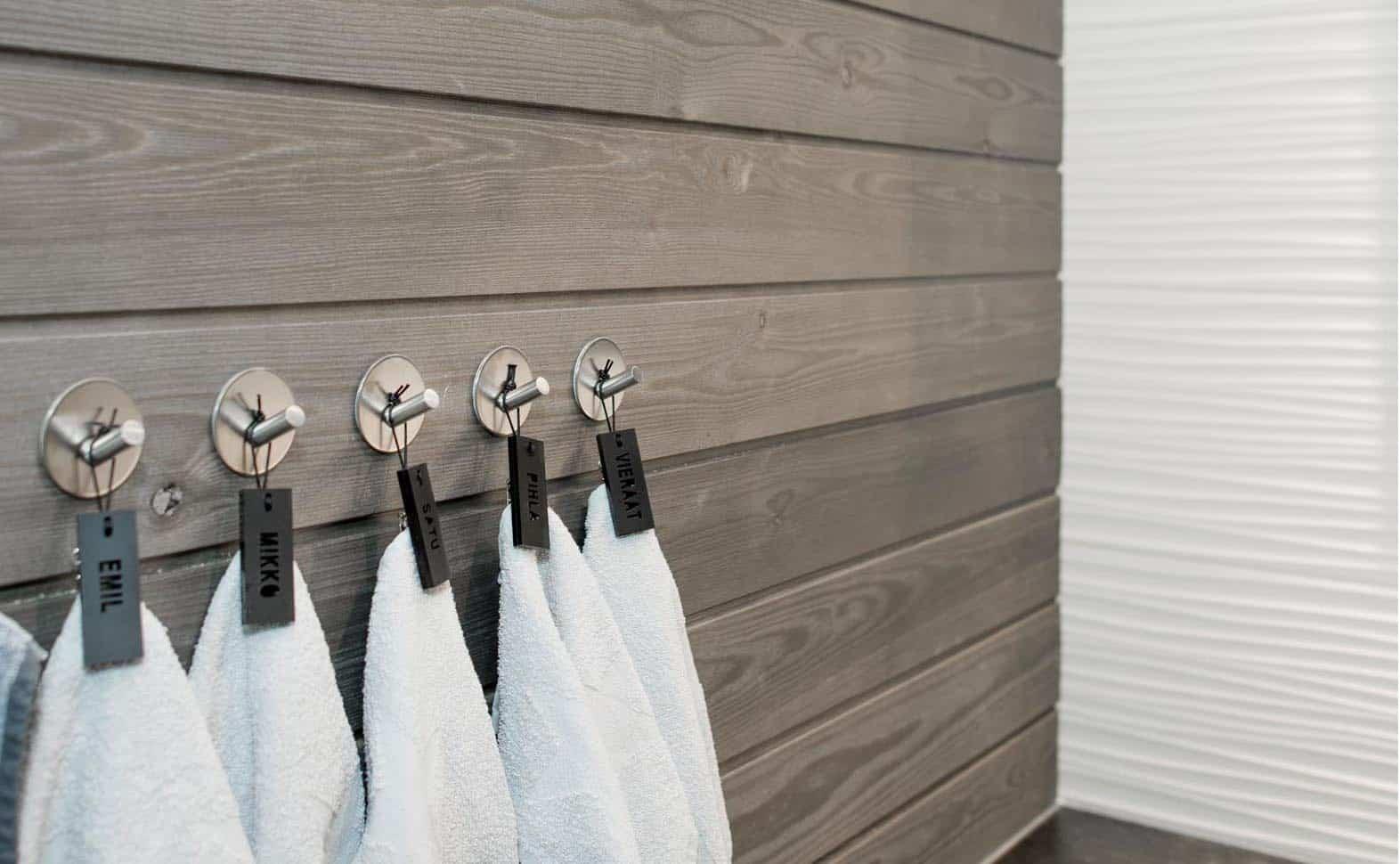Wood is a living material that needs to be carefully secured. Living wood means that it shrinks during dry and cold frosty days and swells with increasing humidity in the room air. Wood therefore absorbs and releases moisture according to the annual cycle.
The wooden panels are fixed by nailing them to the studs. The boards are vertical or horizontal boards, placed about 400 mm apart from each other. The direction in which they are installed affects the panel installation. Horizontal paneling requires vertical and vertical paneling requires horizontal paneling. Traditionally, decorative panels have been installed by nailing from the top. This means that the panel is placed against the grid and screwed down from both the top and bottom edges. The fixing marks are then visible on the surface of the panel.
Concealed fixing for a beautiful, nail-free surface
Siparila has developed a concealed fastening form for interior panels, which allows the panels to be fastened in such a way that the nail heads remain hidden. The panels are then fixed to the pots by nailing them from the male point to the pot. Two nails should be shot per fixing point.
The nails should be shot into the cane at an angle to each other. The female point of the next panel is inserted into the male point of the attached panel, hiding the nail heads underneath. Continue in this way until the surface to be panelled is complete. The concealed fixing method is as durable a way of fixing a wood panel to a wall or ceiling as the traditional top fixing method
All Siparila interior panels are concealed. The nail heads are always hidden under the next panel. The panels also have a special nailing groove in the male point to make it easier to find the right fixing point. With concealed fixing interior panels, you get a beautiful and uniform wooden surface.

